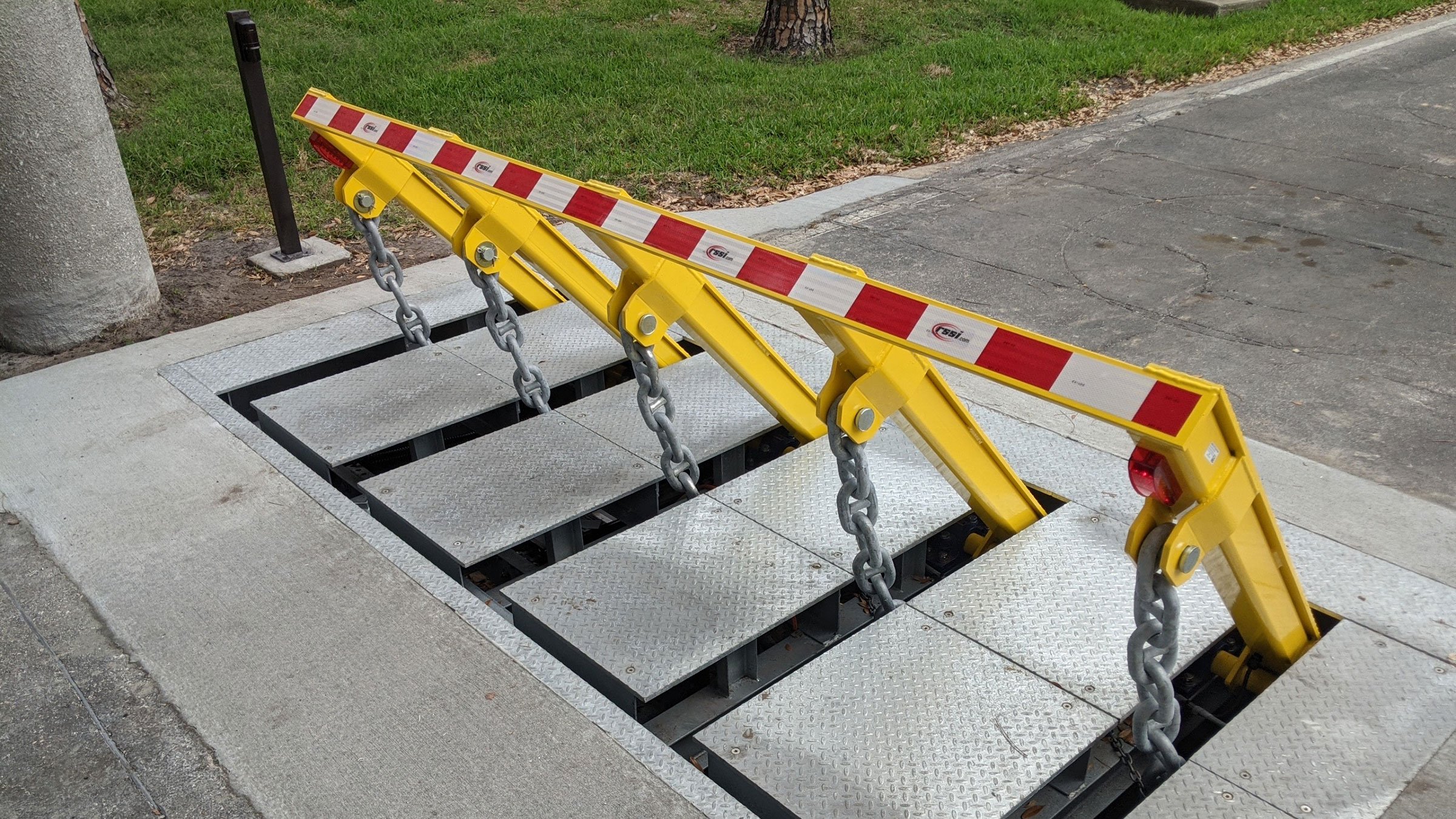As the saying goes, necessity is the mother of invention. For Joey Blair, who happened to be working on a military base as the events of September 11, 2001 unfolded, the need for enhanced facility security gave birth to RSSI Barriers, the only all-electric vehicle barrier company in the industry.
Twenty years later, the company Blair founded is the global leader in all-electric vehicle barrier solutions. Headquartered in Panama City, Florida, RSSI Barriers serves customers in over 70 countries at locations including military bases, government agencies, petroleum companies, data centers and other commercial entities.
RSSI Barriers has developed the most advanced electric barrier systems in the industry. The company’s most deployed system, the RSS-2000 Electric Finger Wedge Barrier, is crash-tested and proven to stop a 15,000 pound vehicle going 50 miles per hour. The RSS-2000 wedge barrier consists of a series of posts (“fingers”) that raise from the pavement when activated. When the barrier is in the “up” position, it forms a wedge to block traffic.
Hydraulic and Pneumatic Systems
“When RSSI entered the market, there were mostly hydraulic barriers and a few pneumatic systems,” said John Kreutzer, president, RSSI Barriers. “End users became concerned about the reliability and lifecycle costs of those systems.”
Specifically, the hydraulic systems include multiple components – such as oil, hoses, fittings and accumulators – that are prone to recurring and high maintenance costs.
“Particularly with a hydraulic system, if a hose or valve fails, the barrier will either go up or down – without any command,” Kreutzer explained. “Obviously, that’s problematic in a security system.”
Maintenance of hydraulic systems tends to be very expensive. For instance, one government location recorded $60,000 in annual maintenance costs for its hydraulic wedge system.
“In fact, our customer who spent $60,000 each year to maintain their hydraulic system now has a budget of $8,000 annually to maintain the RSS-2000, and they are not exceeding that number,” said Kreutzer.
"Annual maintenance costs at this location are 87% less than they were for hydraulic systems,” Kreutzer added “The RSSI all-electric system delivers value throughout our barrier’s lifecycle.”
In addition to reducing maintenance costs, the all-electric system eliminates environmental concerns regarding potential hydraulic fluid spills or leaks.
All-Electric Design Improves Reliability and Performance
To improve overall performance, RSSI Barriers took an all-electric approach to system design, based on a Rockwell Automation control solution. The system features Allen-Bradley® CompactLogix™ controllers, Kinetix® servo drives, MP-Series™ heavy-duty electric cylinders, PanelView™ graphic terminals – and runs on an EtherNet/IP™ network.
“At the outset, we decided we didn’t need something structurally as heavy as the giant steel plates used in hydraulic systems to get the job done,” said Chris Brehm, vice president of sales, RSSI Barriers.”
Instead, the company applied a “finger wedge” design that proved tough enough to meet or exceed every category of the DOS K12 and ASTM M50 crash standards – but light enough to take advantage of the enhanced speed and higher duty cycles provided by an electric servo motor.
“This design allowed us to reduce maintenance and improve reliability for our customers with electric servo motors and drives,” said Brehm. “It also opened up the door for more speed.”
“For example, typical hydraulic wedge systems require about 5 seconds to lift or lower the barriers,” Brehm continued. “The RSS-2000 system completes these operations in 3 seconds under normal circumstances or in 1.5 seconds during emergency fast operation (EFO).”
The Beauty of Integrated Controls
At any location, a vehicle barrier system is just one component of facility access control. Most “access control points” involve traffic calming techniques to slow approaching vehicles, such as speed tables and serpentine roads – plus warning signs, signals, traffic arms, gates, and “wrong way” or “overspeed” detection.
“RSSI has a lot of experience working with customers on the sequence of operations or exactly how they will control the barrier,” Kreutzer said.
To manage the sequence, RSSI Barriers can provide complete solutions, fully integrated with Rockwell Automation control systems.
“The PLCs and touchscreens really give us the flexibility to integrate with almost anything – card readers, RFID readers, intercom systems or sensors,” said Kreutzer. “I don’t think we’ve ever encountered a type of electronic equipment we couldn’t integrate with our control system.”
Using the integrated control system, RSSI technicians can make modifications remotely and on the fly – with a simple programming change.
Partnering for Success
RSSI Barriers participates in the Rockwell Automation PartnerNetwork™ program and the two companies work together to help solve technical challenges. For example, Rockwell Automation customized the system’s MP-Series electric actuator to meet specific application and environmental requirements – and keeps the equipment in stock at the local distributor.
“We also work closely with Rockwell Automation engineers and consultants as we transition to new control technology,” Kreutzer said.
By standardizing on a Rockwell Automation platform, RSSI Barriers can provide existing customers with a cost-effective way to update their equipment.
“Our galvanized steel barriers are built for a long life,” said Kreutzer. “We’ve had people say they need a quote for a new barrier – and we say we can just retrofit the control system for you.”

